- Home
- slideshows
- miscellaneous
- California is becoming a nightmare. Here's why the state is getting unlivable, according to science.
California is becoming a nightmare. Here's why the state is getting unlivable, according to science.
California fire season is getting longer and more destructive.

To minimize the risk that sparking power lines could ignite more blazes, California's largest utility, Pacific Gas & Electric Co., shut off power to hundreds of thousands of customers this fall.

From June 2014 to December 2017, PG&E power lines prompted more than 1,500 California wildfires. Many engineers and energy experts have attributed these fires to the company's failure to trim trees and upgrade its infrastructure.
The company was responsible for the Camp Fire last year, and a broken jumper cable on a PG&E transmission tower may have started the recent Kincade Fire in Sonoma County.
In October, PG&E initiated multiple rounds of blackouts, affecting an estimated 2 million Californians, to lower the risk that its lines could ignite more fires. The company has said it will continue to instate blackouts when wildfire risk is high.
"We'll likely have to make this kind of decision again in the future," the company's CEO, Bill Johnson, said at a news conference on October 10.
From 2011 to 2015, California was the driest it's ever been in recorded history.
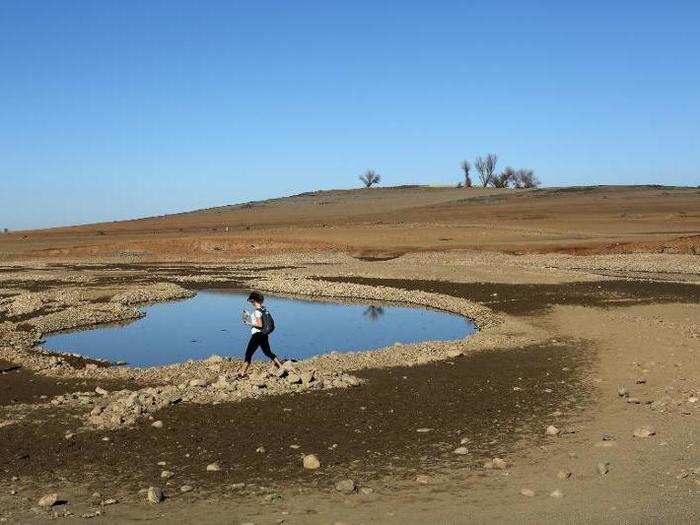
Millions of trees died and thousands of lawns disappeared as homeowners were encouraged to tear up their grass. That emergency situation has ended, but the effects still linger. Some parts of Central California are still "abnormally dry," according to the US Drought Monitor.
As global temperatures continue to warm, California's risk of drought is expected to rise. A 2018 study predicted the state will see an increase of between 25% and 100% in extreme wet-to-dry seasonal swings.
The drought caused land to sink in the Central Valley, the state's main agricultural hotspot.
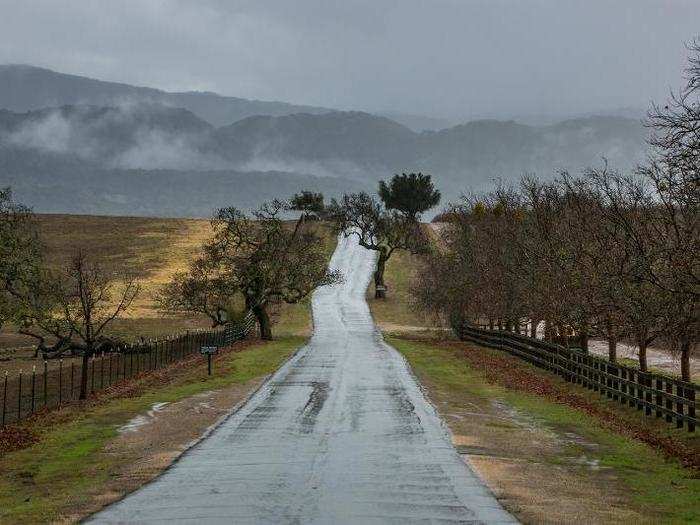
California's Central Valley is still starved for groundwater due to the drought. The arid nature of the soil has forced farmers to over-pump ground water, causing the land to sink at a rate of 2 inches per month in some areas.
The town of Arbuckle, known for its almond orchards, has sunk more than 2 feet in the last nine years, according to a survey from the California Department of Water Resources.
This sinking could have dangerous consequences for the Central Valley's infrastructure: It can cause roads to crack, give rise to holes in the ground, and damage underground water pipes. In the long run, that could threaten the region's mega-farms, which produce about a quarter of US food.
California has more than 500 active fault lines. Scientists say a big earthquake is overdue.
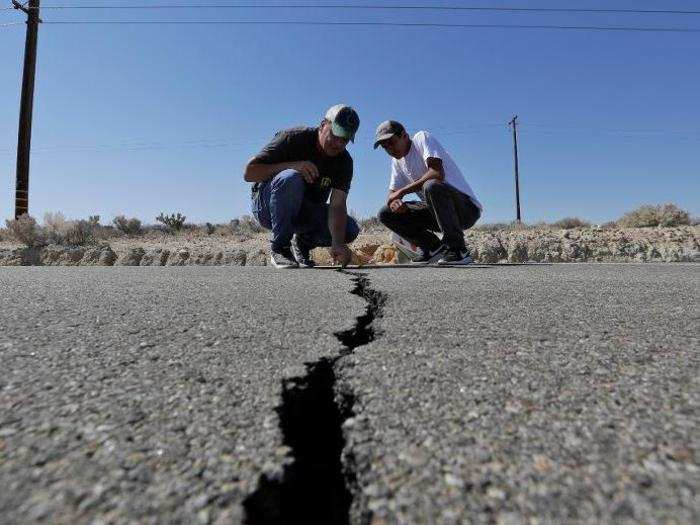
Most Californians live within 30 miles of an active fault line. On July 4, a 6.4-magnitude quake produced gas leaks and power outages in Ridgecrest, a small city about 125 miles northeast of Los Angeles. The following day, that same community witnessed an even more destructive 7.1-magnitude quake.
But residents near the San Andreas fault — which stretches 800 miles from Eureka to San Bernardino — have particular reason for concern. The fault is expected to produce what many call the "big one": an earthquake of a magnitude 6.7 or higher.
The San Andreas fault hasn't experienced a ground-rupturing earthquake in more than a century — an unprecedented "earthquake drought," according to seismologists.
"Chances are, we're going to have more earthquakes in the next five years than we've had in the last five years," seismologist Lucy Jones told the Guardian.
More than 100,000 coastal homes in California are at risk of chronic flooding by the end of the century.
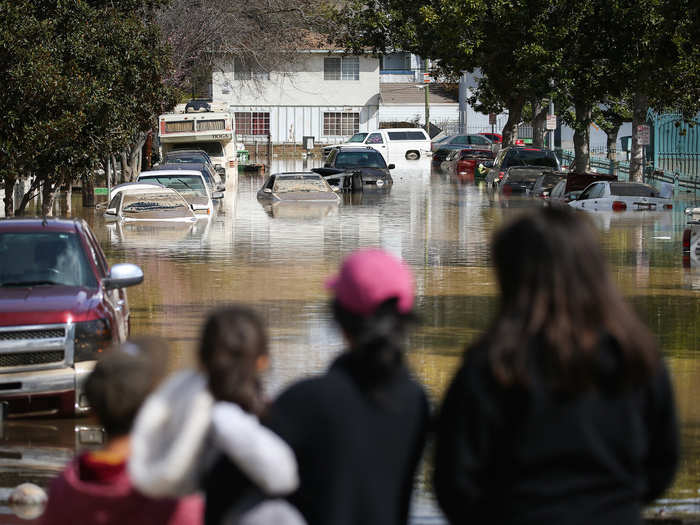
A 2018 report from the Union of Concerned Scientists (UCS) found that if global sea levels rise 6.6 feet by 2100 — the most extreme scenario predicted by the National Oceanic and Atmospheric Administration — $15 billion worth of property in California could be at risk of chronic flooding by 2045.
The area with the most homes at risk is Marin County in the San Francisco Bay Area. The UCS anticipates that nearly 4,400 homes there will see chronic flooding in less than 30 years.
The state is also an expensive place to live. The average gallon of milk in California could set you back nearly $3.

The 2018 Cost of Living Index from the Council for Community and Economic Research identifies California as the second-most expensive state in the country — behind Hawaii — in terms of living costs. The report calculates the annual average cost of living based on 60 goods and services in categories like food, housing, utilities, transportation, and healthcare.
An average energy bill in California is around $237 a month, while a doctor's visit could cost around $150.
Rents and home prices are among the highest in the US.
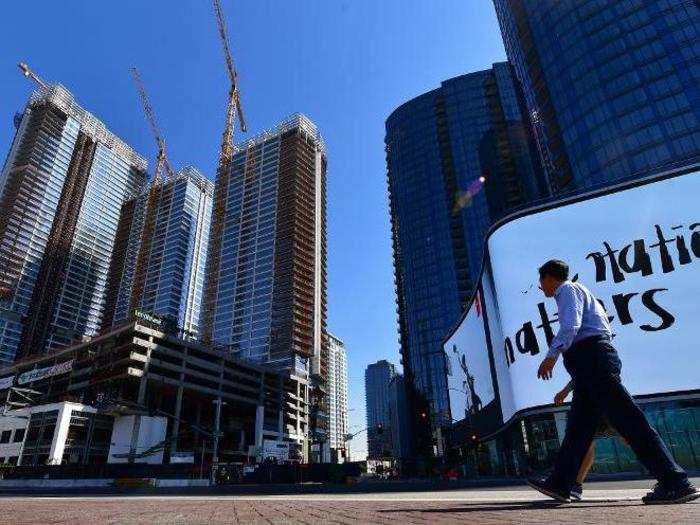
The median listing price for a home in California is around $550,000. That makes California one of the most expensive places to buy a home in the country, behind Hawaii and Washington, DC.
It's also the state with the highest rent. As of November, the average monthly rent in California was $2,800 — nearly 65% higher than the national average.
Among the 10 cities with the highest rents in the US, half are located in California. San Francisco has by far the highest rents in the country. San Jose, Los Angeles, Oakland, and San Diego also make the top 10.
A shortage of affordable housing has led to rising homelessness in cities like LA and San Francisco.

California has the greatest number of homeless individuals in the country — around 130,000 people, or nearly a quarter of the nation's homeless population.
The state is home to four of the 10 cities with the largest homeless populations in the US: Los Angeles, San Francisco, San Diego, and San Jose.
The homelessness crisis in San Francisco is by far the most acute; United Nations Special Rapporteur Leilani Farha has called it a "human rights violation." From 2017 to 2019, the city saw its homeless population rise by 30%.
In Los Angeles, meanwhile, the homeless population has increased by 12% since 2018.
To top it all off, California is heavily dependent on cars.
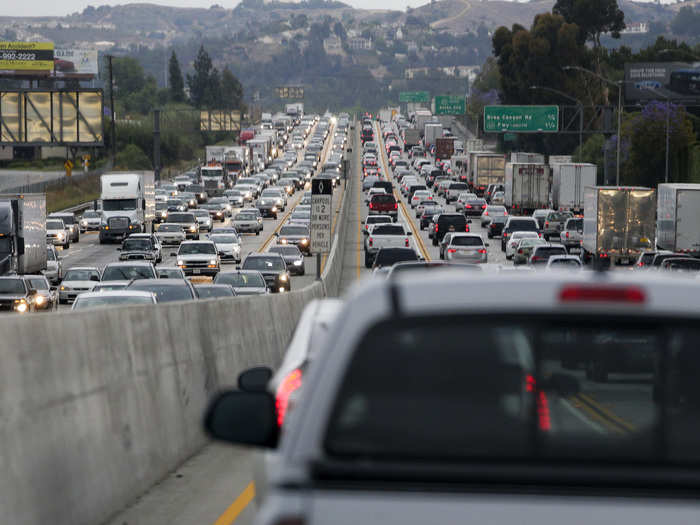
California isn't as congested as Hawaii, New Jersey, or Washington, DC, but it has the highest number of registered cars in the country: around 28.7 million.
Its most populous city, LA, also has some of the most congested roads in the US. From 2003 to 2018, nearly 3,400 people died in traffic collisions in LA.
This congestion can lead to painstaking commutes. In the city of Palmdale, just north of Los Angeles, 35% of residents commute more than two hours round-trip to work each day.
Driving also comes with an environmental cost, of course: Cars and light-duty trucks are responsible for more than 20% of US greenhouse gas emissions.
California has the worst air pollution in the country.
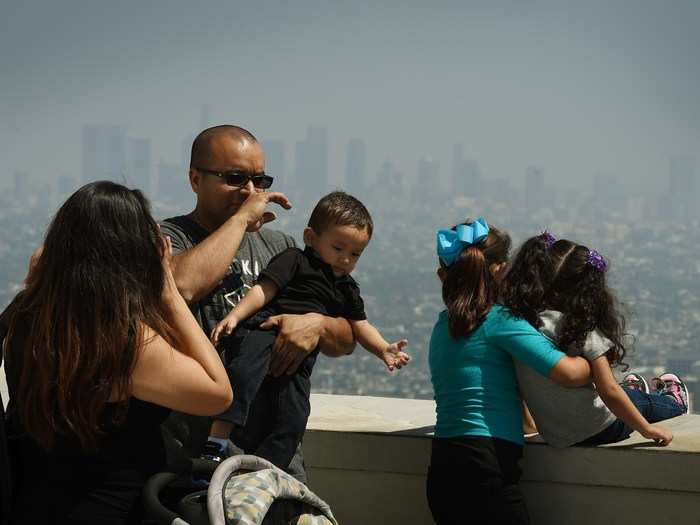
In its 2019 "State of the Air" report, the American Lung Association listed the 25 US cities with the worst air pollution. Nine are located in California.
Five of those California cities failed to meet national air-quality standards.
The report identified Los Angeles as the US city with the worst ozone pollution, which can cause breathing problems and increase one's risk of heart attack. Ozone pollution results from a chemical reaction between sunlight and pollutants from cars, power plants, industrial boilers, and refineries.
The Fresno metropolitan area in the Central Valley, meanwhile, had the worst year-round particle pollution, which comes from dust and other tiny particles (usually carbon dioxide and methane). The city of Bakersfield had the sharpest spike in particle pollution in 2019.
Particle pollution has been linked to lung and throat cancers, as well as heart attacks. A recent study found that it may also increase one's risk of brain tumors.
Many of California's challenges stem from its size, but that's only part of the problem.
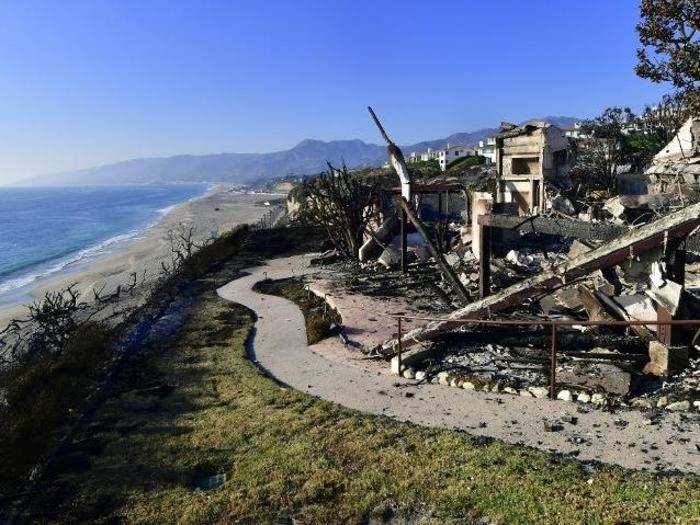
California is the most populous state in the US, with nearly 40 million residents. That naturally gives rise to congestion, overcrowding, and rising costs of living.
But California's problems also stem from its geography, the decisions of local companies, and the way it has chosen to build. The recent spate of wildfires are a prime example of this.
"While forest fires have always happened, [people] have impinged into areas that are prone to fire," Marko Bourne, a former Federal Emergency Management Agency official, told Business Insider. "Now we're being impacted by those fires directly."
Over time, this mixture of natural threats and human activity could transform the state into a nightmare.
Popular Right Now
Popular Keywords
Advertisement